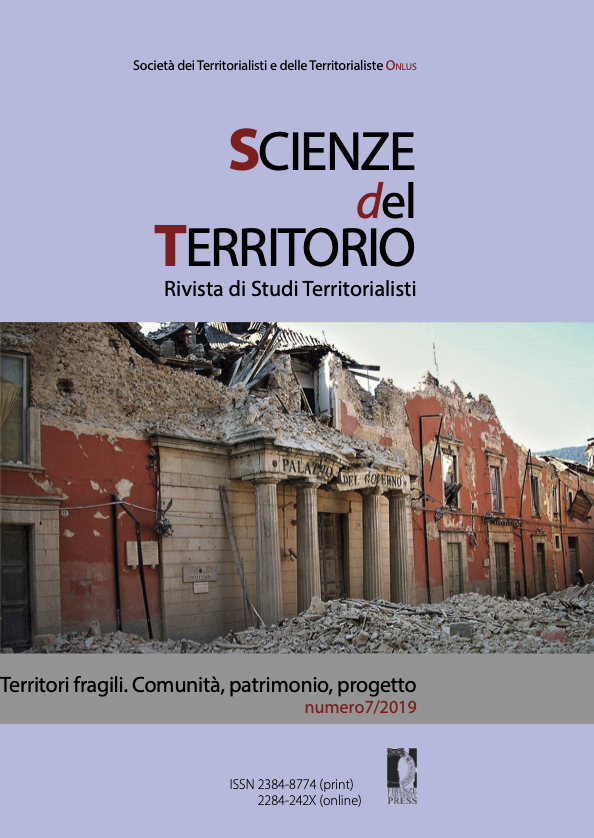Riabitare un patrimonio: le ‘casette’ e la vita transumante nei monti del Cicolano (Rieti) tra memoria e nuova coscienza dei luoghi
Published 2019-12-27
Keywords
- transhumance,
- Cicolano,
- Rascino,
- cultural heritage,
- depopulation
How to Cite
Abstract
In the plateau of Cicolano, south-eastern area of the province of Rieti, since ancient times human living has been possible thanks to agricultural, forest and pastoral activities. The only permanent centre was Castello di Rascino. Once it was destroyed by wars, at the end of the 13th century, the population migrated in two different directions, a part contributing to the foundation of L’Aquila, the other populating the slopes of the adjacent Valle del Salto. To abandon the plateau did not mean to abandon the productive activities, which became seasonal starting the phenomenon of transhumance. Since the seasonal transhumant, who hung about the plateau looking after the flocks or growing cereals and legumes, needed shelters, they started building structures locally called ‘casette’ (small houses). Strategically positioned close to privately appropriated fields or pastures, 147 of these ancient structures have been surveyed. Characterised by a simple and essential architecture, they have fences with ‘anti-wolf’ features to shelter flocks. The social changes of the first half of the last century decreed their abandonment. A recent recovery action, partly supported by EU funds, has helped making this a collective asset which, if well managed, can represent an opportunity for economic and social rescue of the entire territory, historically isolated and fragile.


